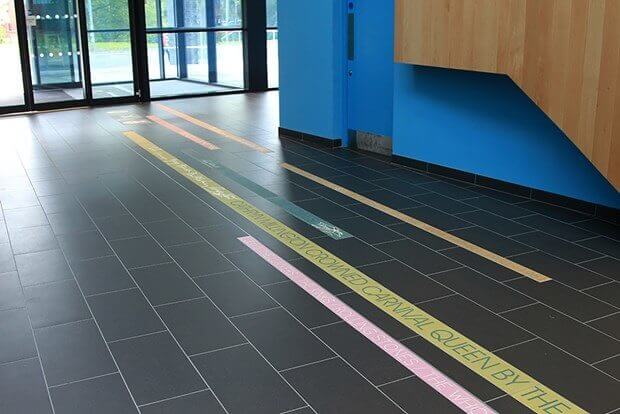Floors are meant to be walked on, so any tiles used for flooring need to be able to withstand a large degree of footfall. Some floors will get romped and stomped on a great deal more than others. In a family home, for example, the kitchen will be walked over by many more pairs of feet per day than the guest bedroom or mum’s study. None of its rooms will suffer the intense and constant footfall of a London station platform or a big supermarket hall. The wrong tiles will not last long in a high traffic area, and soon start to look shabby and tired. They will collect dirt and germs, crack, wear out, and ultimately need replacing.
Durability, then, is paramount. Those floors that get the greatest footfall need the toughest tiles. Tough doesn’t equate with ugly, though, and some of the toughest most durable tiles can also be the most attractive. Moreover, the fact that a tile is tough means it is strong enough to maintain its attractiveness under a great deal of stress.
Porcelain tiles
Porcelain tiles, while incredibly strong and all but indestructible, can certainly look stunning in any design. They are the choice par excellence for high-traffic flooring. Porcelain is made from a very dense clay fired at high temperatures, which gives it a low porosity. This makes it strong, tough, resilient, and non-absorbent. Water, spilled drinks, rain, mud, and all kinds of other unmentionables will not soak into the tile or leave stains. With more porous materials, water can seep into the tile and freeze, causing cracks. The density and water-resistant quality of porcelain prevents this from occurring: the water basically cannot get in there nor do any damage.
Wherever it is used, porcelain always looks great. The very word porcelain conjures up images of beautiful ancient Chinese vases with smooth surfaces almost glowing with life and lustre. This association of porcelain with beauty is entirely justified, and a porcelain floor tile, designed, coloured and textured to fit perfectly with its surroundings, will stay strong and look fabulous. Thanks to modern techniques for custom porcelain tile printing, this highly versatile material can be coloured, patterned, and textured to work harmoniously with any design. Aesthetically and practically, it is an ideal material for high traffic flooring.
Ceramic tiles
Ceramic tiles, if made to the highest standard, can match many of the properties of porcelain. It’s true that porcelain has the edge: it is, after all, denser and stronger than ceramic. Nevertheless, ceramic floor tiles are a perfectly good alternative. They too can withstand a lot of foot traffic, weather, water and spills. Like porcelain, they can be printed to match any colour. Ceramic shares porcelain’s aesthetic versatility, and colours and textures can be precisely selected to achieve an overall consonance of effect within a design concept.
Natural Stone
Stone tiles such as granite or slate can look amazing and uniquely natural. The colours of stone blend well with many different colour schemes. Public safety is a key concern in areas with a lot of foot traffic, and this should inform the choice of tiles used. Stone tiles generally have good anti-slip properties that make them a safe choice for public areas with high levels of foot traffic.
The chief disadvantage of using stone tiles is the relatively high degree of maintenance required if they are to remain fresh and attractive looking over a long period. Periodic re-sealing and other types of maintenance may be required to keep them looking good. They certainly cannot match porcelain and ceramic for low maintenance and ease of cleaning. Nevertheless, they are an attractive choice particularly in outdoor areas. Ceramic tiles can be given a “stone” look using modern printing techniques, so the aesthetic qualities of stone tiles can be reproduced almost exactly without the problems of high maintenance and high cost that come with real stone tiles. Ceramic tiles can be produced with high anti-slip ratings, and so they can easily match stone tiles for safety.
Luxury Vinyl Plank (LVP)
This is a popular choice for flooring, and though it may not match the durability of stone, ceramic and porcelain, it is certainly more wear-resistant than laminate. A drawback of this type of tile is its lack of sustainability. Vinyl is a type of thermoplastic and its manufacture is less eco-friendly than ceramics and porcelain, which are made with natural materials in a relatively clean and efficient process. As consumers become more aware of the need to protect the environment, they will lean more toward natural materials like stone, ceramic and porcelain.
All of these options have their advantages, but ceramic and especially porcelain tiles are very strong contenders because of their durability, versatility and low maintenance.





















